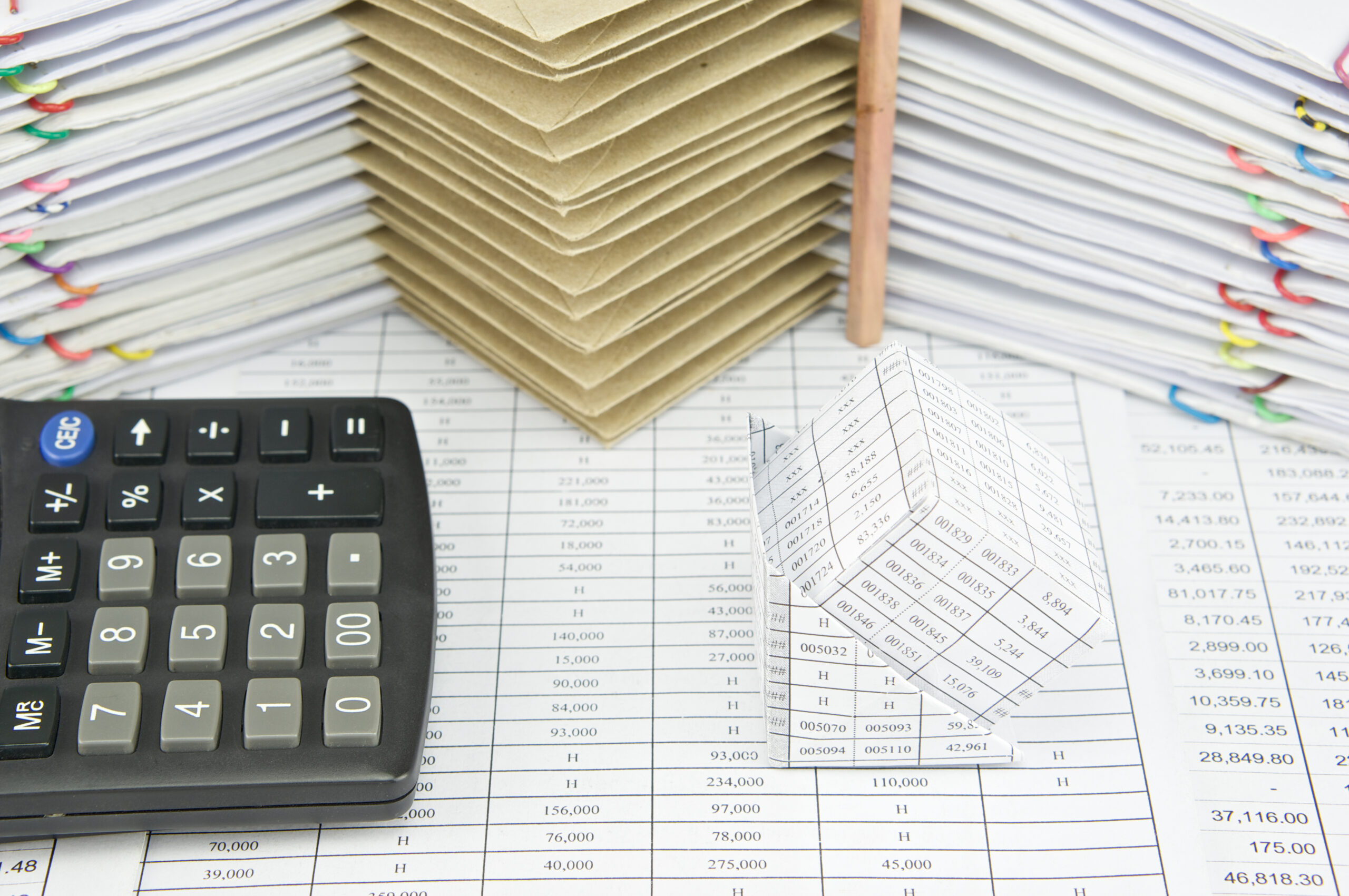Reducing Balance Method

The reducing balance method of depreciation is a widely used accounting technique for calculating the declining value of assets over time. This method recognises that many assets, such as vehicles or machinery, lose value more rapidly in their early years of use. Unlike the straight line method, which applies a constant depreciation rate, the reducing balance method applies a fixed percentage to the asset’s net book value each year. This results in higher depreciation charges in the initial years and lower charges as the asset ages.
The method is particularly useful for assets that experience rapid technological obsolescence or have higher productivity in their early years. By reflecting the asset’s declining efficiency and increasing maintenance costs over time, the reducing balance method provides a more accurate representation of an asset’s true economic value. This approach can have significant implications for financial reporting and tax calculations, making it an essential tool for businesses to understand and apply correctly.
What is Depreciation?
Depreciation is an accounting concept that represents the gradual reduction in the value of a tangible asset over its useful life. This decrease in value occurs due to factors such as wear and tear, age, and technological obsolescence. Essentially, depreciation spreads the cost of an asset over the period it is used, rather than expensing the entire cost in the year of purchase. This helps businesses match the expense of using the asset with the revenue it generates, providing a more accurate picture of financial performance. For example, if a company buys a piece of machinery for £10,000, instead of recording a £10,000 expense in the first year, the company will allocate a portion of that cost each year over the machine’s useful life. Depreciation is crucial for financial reporting, tax calculations, and budgeting, ensuring that the value of assets is accurately reflected on the balance sheet.
What is the Reducing Balance Method?
The reducing balance method is a depreciation technique that calculates an asset’s declining value over time. Unlike the straight line method, which applies a constant depreciation rate, the reducing balance method uses a fixed percentage of the asset’s current book value each year. This results in higher depreciation charges in the early years and lower charges as the asset ages.
For example, if a £10,000 asset has a 20% depreciation rate, the first year’s depreciation would be £2,000. In the second year, the depreciation would be calculated on the remaining £8,000, resulting in a £1,600 charge. This pattern continues, with the depreciation amount decreasing each year.
This method is particularly useful for assets that lose value quickly in their early years, such as vehicles or technology equipment. It reflects the reality that many assets are more productive when new and experience higher maintenance costs as they age. The reducing balance method provides a more accurate representation of an asset’s economic value over time, making it a valuable tool for financial reporting and tax calculations.
Differences Between Straight Line and Reducing Balance Methods
Straight Line Method
-
- Constant Depreciation Amount: The straight line method applies a fixed annual depreciation amount throughout the asset’s useful life. This means the depreciation expense remains the same each year, making it predictable and easy to calculate.
- Depreciation Based on Initial Cost: The depreciation rate is calculated based on the initial cost of the asset. This involves subtracting the residual value (the estimated value at the end of its useful life) from the initial cost and dividing by the number of years the asset is expected to be in use.
- Zero Residual Value: At the end of the asset’s useful life, its book value is reduced to zero. This method assumes that the asset will have no remaining value at the end of its depreciation period.
- Impact on Profit: As the asset ages, repair and maintenance costs typically increase. However, since the depreciation amount remains constant, the overall impact on annual profit diminishes over time.
- Simplicity: The straight line method is straightforward and easy to implement, making it a popular choice for businesses that prefer simplicity in their accounting practices.
Reducing Balance Method
-
- Decreasing Depreciation Amount: The reducing balance method applies a fixed percentage to the asset’s book value each year, resulting in a higher depreciation expense in the early years and a decreasing amount over time. This reflects the asset’s declining efficiency and value.
- Depreciation Based on Book Value: Unlike the straight line method, the reducing balance method calculates depreciation based on the asset’s book value at the beginning of each year. This means the depreciation expense is recalculated annually, taking into account the reduced book value.
- Non-Zero Residual Value: The asset’s book value never reaches zero under the reducing balance method. Instead, it continues to decrease but always retains some value, reflecting the asset’s ongoing utility and potential salvage value.
- Balanced Impact on Profit: As the asset ages, both the depreciation expense and repair costs change. The reducing balance method balances these changes, resulting in a more stable impact on annual profit and loss statements.
- Complexity: Calculating depreciation using the reducing balance method is more complex than the straight line method. It requires annual recalculations and a deeper understanding of the asset’s usage and value decline, making it more suitable for businesses with sophisticated accounting needs.
Both the straight line and reducing balance methods have their unique advantages and are suitable for different types of assets and business needs. The straight line method is simpler and provides consistent depreciation expenses, making it ideal for assets with a predictable usage pattern. On the other hand, the reducing balance method offers a more accurate reflection of an asset’s declining value and efficiency, making it suitable for assets that depreciate rapidly in their early years. Understanding these differences helps businesses choose the most appropriate method for their financial reporting and tax purposes.
How to Calculate Depreciation Using the Reducing Balance Method
Required Information for Calculation
To calculate depreciation using the reducing balance method, you need the following information:
- Original Value of the Asset: The initial purchase cost of the asset.
- Depreciation Rate: The fixed percentage rate at which the asset will depreciate each year.
- Residual Value: The estimated value of the asset at the end of its useful life (optional, but useful for more accurate calculations).
Depreciation Formula
The formula for calculating depreciation under the reducing balance method is:
Depreciation = Net Book Value × Depreciation Rate
Where:
Net Book Value is the asset’s value at the beginning of the accounting period.
Depreciation Rate is the fixed percentage rate.
If considering the residual value, the formula can be adjusted to:
Depreciation = (Net Book Value−Residual Value) × Depreciation Rate
Example Calculation
Let’s explain this with an example:
Scenario: XYZ Limited purchased a truck for £75,000 on January 1, 2016. The depreciation rate is 20% per year.
- Year 2016:
- Net Book Value: £75,000
- Depreciation: £75,000 × 0.20 = £15,000
- End of Year Book Value: £75,000 – £15,000 = £60,000
- Year 2017:
- Net Book Value: £60,000
- Depreciation: £60,000 × 0.20 = £12,000
- End of Year Book Value: £60,000 – £12,000 = £48,000
- Year 2018:
- Net Book Value: £48,000
- Depreciation: £48,000 × 0.20 = £9,600
- End of Year Book Value: £48,000 – £9,600 = £38,400
Notice that the depreciation amount decreases each year because the depreciation rate is applied to the reduced book value of the asset. This method reflects the higher depreciation expense in the early years when the asset is more productive and its value declines faster.
By following these steps, you can accurately calculate the depreciation of an asset using the reducing balance method, ensuring your financial records reflect the true economic value of your assets over time.
Advantages of the Reducing Balance Method
The reducing balance method of depreciation offers several advantages that make it an attractive option for businesses. Here are advantages:
- Reflects real-world asset value decline: This method accurately represents how many assets lose value more rapidly in their early years. For example, vehicles and technology equipment often depreciate faster initially, which the reducing balance method captures effectively.
- Matches revenue with expenses: By allocating higher depreciation expenses in the early years when an asset is typically more productive, this method better aligns with the matching principle in accounting. It ensures that expenses are recognised in the same period as the revenue they help generate.
- Tax benefits: Higher depreciation charges in the initial years can lead to lower taxable income, resulting in potential tax savings for businesses. This can be particularly beneficial for companies with significant capital investments.
- Balances repair costs: As assets age, their maintenance costs typically increase. The reducing balance method counterbalances this by decreasing depreciation expenses over time, helping to stabilise the overall impact on profit and loss statements.
- Encourages timely asset replacement: By showing a more rapid decline in asset value, this method can prompt businesses to consider replacing assets sooner. This can lead to improved efficiency and productivity as companies maintain up-to-date equipment.
- Flexibility in depreciation rate: Businesses can adjust the depreciation rate to better suit their specific assets and circumstances. This flexibility allows for more accurate representation of an asset’s declining value over its useful life.
Disadvantages of the Reducing Balance Method
- Higher Initial Depreciation Charges: One of the main drawbacks of the reducing balance method is that it results in higher depreciation expenses in the early years of an asset’s life. This can significantly impact a company’s financial statements by reducing net income during those initial years, which may not accurately reflect the asset’s actual decline in value.
- Complex Calculations: The reducing balance method involves more complex calculations compared to the straight-line method. It requires continuous adjustments to the book value of the asset and the application of a fixed depreciation rate, which can be time-consuming and prone to errors if not done correctly.
- Residual Value Not Reduced to Zero: Unlike the straight-line method, the reducing balance method does not reduce the book value of an asset to zero by the end of its useful life. This can complicate the process of fully depreciating an asset and may require additional adjustments or write-offs.
- Inconsistent Expense Matching: The method may not always match depreciation expenses with the actual revenue generated by the asset. In some cases, the asset might not generate significant revenue in its early years, leading to a mismatch between high depreciation charges and lower revenue, which can distort financial performance.
- High Depreciation Rates Required: To ensure that the asset is depreciated to its residual value within a reasonable timeframe, a high depreciation rate is often required. This can place an excessive burden on financial statements in the initial years and may not be suitable for all types of assets.
- Potential for Misleading Financial Analysis: The higher initial depreciation expenses can lead to lower reported profits in the early years, which might mislead stakeholders about the company’s financial health. This can affect investment decisions, credit ratings, and overall financial analysis.
When to Use the Reducing Balance Method?
The reducing balance method of depreciation is particularly useful in specific scenarios, making it important to understand when to apply this approach. Here are the key situations where the reducing balance method is most appropriate:
- Assets with rapid technological obsolescence: For items like computers, smartphones, or other tech equipment that quickly become outdated, this method accurately reflects their faster loss of value in the early years.
- Vehicles and machinery: These assets typically lose value more quickly in their initial years of use, making the reducing balance method a good fit.
- Assets with higher productivity in early years: When an asset is most efficient and productive at the beginning of its life, this method aligns depreciation with its economic reality.
- When accelerated depreciation is desired for tax purposes: The higher depreciation charges in early years can lead to lower taxable income, which may be beneficial for some businesses.
- Assets requiring increased maintenance over time: As repair costs tend to rise as an asset age, the reducing balance method balances this by applying lower depreciation in later years.
- When matching revenue to expenses is important: For assets that generate more revenue in their early years, this method helps align depreciation expenses with the income produced.
- Industries with rapidly changing technology: Sectors like IT, telecommunications, or high-tech manufacturing often benefit from this method due to the fast-paced nature of technological advancements.
- When salvage value is expected to be minimal: The reducing balance method is particularly suitable for assets that are likely to have little to no value at the end of their useful life.
- Small businesses looking to optimise cash flow: The higher initial depreciation can provide tax benefits that may be particularly valuable for growing companies.
By considering these factors, businesses can determine if the reducing balance method aligns with their asset management needs and financial objectives. It’s crucial to evaluate each asset individually and consult with accounting professionals to ensure the most appropriate depreciation method is applied.
If you’re an accountant or bookkeeper looking for accounting software to grow your practice, Nomi offers a comprehensive cloud-based solution tailored to your needs. Our software streamlines practice management, bookkeeping, payroll, final accounts, tax submissions, and more. With Nomi, you can efficiently manage staff workloads, automate tasks, and track progress, allowing you to focus on delivering value to your clients.
Our platform integrates seamlessly with various business tools and promotes collaboration between you and your clients. It simplifies complex processes, from bank reconciliation to VAT submissions, ensuring compliance and accuracy.
To help you experience the full potential of our software, we offer a 14-day free trial. This trial period allows you to explore Nomi’s features and see how it can transform your practice. Book a demo and try Nomi today and discover how our cloud accounting software can improve your practice’s growth and efficiency.
Want to find out more?
Book a free 30-day trial or talk to one of our advisor and see how our accounting software can help you manage staff, increase profitability and take your practice to the next level.

How to Change a Company’s SIC Code in a Confirmation Statement
As your business grows or evolves, the type of work you do might change too,...
Read More

How Accounting Software Helps with Final Accounts Preparation
As the financial year ends on April 5, it's time to prepare your final accounts....
Read More

Be Audit-Ready: What HMRC Wants to See in Your Corporation Tax Records
Keeping accurate financial records has always been an important part of running a compliant limited...
Read More

Onboarding That Wins Clients: A Smarter Start For Accountants
Client onboarding is about more than just ticking admin boxes. A smooth, professional client onboarding...
Read More